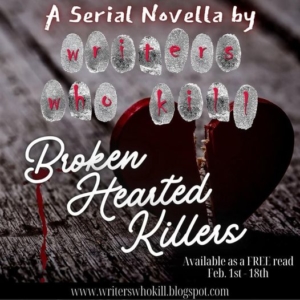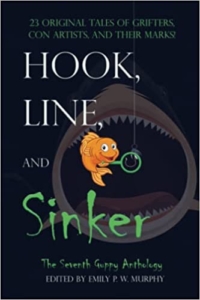by Paula Gail Benson
Each year, it’s a special joy for me to conduct mini-interviews with the Agatha nominees for best first novel and best short story. I love these categories because they introduce you to new writers (and the fascinating worlds they are creating) and they showcase gifted practitioners whose short works are amazing in their clarity and complexity.
This year, I’m doing back-to-back blog posts, today in The Stiletto Gang and tomorrow in Writers Who Kill. As always, the answers are revealing and intriguing.
For today, I asked each group an individualized question, then followed up with one I’ve come to traditionally use about footwear (after all, The Stiletto Gang is all about highlighting shoes as well as writing).
Please join us today and tomorrow to hear from these talented authors.
Best First Novel
The Finalist, Joan Long (Level Best Books)
Cheddar Off Dead, Korina Moss (St. Martin’s)
Death in the Aegean, M. A. Monnin (Level Best Books)
The Bangalore Detectives Club, Harini Nagendra (Constable)
Devil’s Chew Toy, Rob Osler (Crooked Lane Books)
The Gallery of Beauties, Nina Wachsman (Level Best Books)
What made you decide to become a writer?

Joan Long
Joan Long:
I became a writer because I love stories. After reading every Nancy Drew book I could get my hands on, I tried to write a mystery myself—at age ten. Needless to say, I wasn’t quite ready to write a novel! But I never gave up on my love of reading and writing.
Korina Moss:
For me, writing was a natural extension of my love of reading. It was always a part of my life, but in June of 2016, two major life events caused me to make it a priority. I switched my perspective from thinking of writing as a lifelong dream to pursuing it as a career goal. Within four years, I had acquired an agent and my first publishing contract for the Cheese Shop Mystery series.

M.A. Monnin
M.A. Monnin:
I’ve known I wanted to be a writer since I was in 5th grade, when I realized how wonderful it was to immerse myself in a really good book.
Harini Nagendra:
I started writing when I was very young–I loved reading and thought it would be fun to write stories of my own. I wrote little ‘books’, tearing out pages from my notebook and stitching them together with thread, co-opting my father as a reader. Later in life, as an ecologist, I wrote quite a bit of non-fiction. I didn’t plan on writing a full-length fiction novel though. Not until I was reading a mass of archival documents on old Bangalore in 2007, and the main heroine of The Bangalore Detectives Club, spunky 19-year-old amateur detective Kaveri Murthy, parachuted into my mind one day, demanding I write a book about her. Kaveri made a compelling case–and got me started on a murder mystery set in 1920s colonial India. It took a while–4 years and a number of false starts and complete rewrites to get to publication in 2022. Now that I’ve started, though, I can see there’s no turning back.

Rob Osler
Rob Osler:
Becoming a writer was in many ways a way to create the type of book I want to read. I love mysteries written in the Agatha Christie whodunnit tradition. I read them as a child and enjoyed the game of guessing the villain’s identity. So I chose the traditional mystery genre. As for featuring gay and lesbian characters, I am gay and believe that many LGBTQ+ readers desire more stories that feature characters like themselves, who are not victims, villains, or cliche’d sidekicks.
Nina Wachsman:
I’ve always wanted to write, since my mother was a writer, and always encouraged me. In high school I had the chance to either go into writing or art, and chose art, and went to Parsons School of Design, where I hoped to major in book illustration, combining both loves. I always kept a subscription to The Writer Magazine to indulge my someday goal of being a writer, and finally went to my first conference, Killer Nashville, with a start of a manuscript. After getting great feedback on my manuscript, and joining Sisters in Crime, attending a few other conferences and learning from other writers, I finished the manuscript which became my debut novel, the Agatha nominee for Best First Novel, The Gallery of Beauties.
Best Short Story
“Beauty and the Beyotch,” Barb Goffman (Sherlock Holmes Mystery Magazine, Feb. 2022)
“There Comes a Time,” Cynthia Kuhn, Malice Domestic Murder Most Diabolical (Wildside Press)
“Fly Me to the Morgue,” Lisa Q Mathews, Malice Domestic Mystery Most Diabolical (Wildside Press)
“The Minnesota Twins Meet Bigfoot,” Richie Narvaez, Land of 10,000 Thrills, Bouchercon Anthology (Down & Out Books)
“The Invisible Band,” Art Taylor, Edgar & Shamus Go Golden (Down & Out Books)
How much of your real life do you incorporate into your short stories?
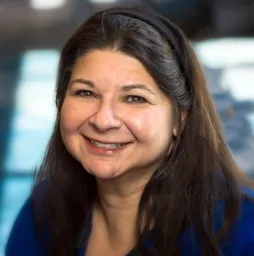
Barb Goffman
Barb Goffman:
Many of my stories draw from my life. My most recent story, “The Joys of Owning a Dog” in issue 13 of Black Cat Mystery Magazine, involves a dog that often escapes from his yard. Anyone who knows me will recognize my current dog, Jingle. The dog in the story also wore a pink pig costume, as did my prior dog, Scout. I have a story coming out later this year (probably) in Black Cat Mystery Magazine called “Real Courage” in which I conflated two incidents from my teenage years and then pumped them up to fit the plot. My story currently up for the Agatha, “Beauty and the Beyotch,” was based on an incident from my life too. That incident is part of just one scene in the story, and everything around it is fiction, but it’s a key scene. I find it useful to mine my past for events that can spark stories. I try to create stories that will affect the reader emotionally, and real-life events that stick in my memory usually serve that purpose well.
Cynthia Kuhn:
I don’t think there are details from my real life intentionally going in the short stories, but responses to certain topics or incidents can serve as a catalyst for the writing of a new story.
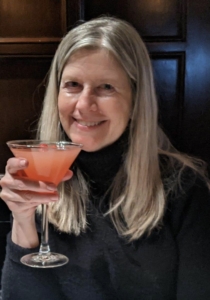
Lisa Q. Mathews
Lisa Q. Mathews:
Truth is a lot stranger—and far more entertaining—than fiction. I don’t draw from my own boring life, though, as much as I “borrow” and recast snippets from other people’s lives. Even the seemingly outrageous setup for “Fly Me to the Morgue” is based on a real-life story. My (heavily disguised) secondary characters in particular are often inspired by people I’ve known, or at least observed from a safe distance. It’s fun to see how they interact—especially after I throw in a murder. My first boss in publishing claimed that, if you added all the characters in a story together, they’d equal . . . the author. Scary, but also probably true.
Richie Narvaez:
Lots! Whether or not I want them to, my opinions, my likes and dislikes—those things find their way into my stories. Now I usually write about my home town, New York, but “The Minnesota Twins Meet Bigfoot” got me out of my real life and got me to explore the North Star state. But I did write that one in part because I’ve been to many sci-fi conventions, and I wanted to bring some of my experiences, good and bad, into a story.

Art Taylor
Art Taylor:
It’s interesting the ways that real-life sneaks into stories. Specific parts of “The Invisible Band” have some very specific foundations in my own life, related to our son Dash. I started thinking about a hotel as a setting because of the LEGO hotels Dash has built, both from his own imagination and then part of a new set, the Boutique Hotel. When he put that together, we actually added our Sherlock Holmes mini-figure to the outside deck! And as for the Sherlock Holmes in the story—the “free-range child” whose parents dressed him up with “deerstalker hat, Inverness cape, even a stylish pipe” (the latter blowing soap bubbles) . . . Well, we dressed Dash up as Sherlock for one of his first Halloween costumes, and whenever we go to a hotel, he likes to hitch a ride on the baggage cart, which the young boy here also does. So in those ways, I’m inspired by things happening in my own life, but there are other, more subtle ways as well in which all of us probably draw on a gesture we’ve seen or a concern we’ve had, those kinds of things, to enhance the depiction of character or ways in which a situation in the real world sparks a “What if?” in our minds, and the stories unfold from there.
If you could invite one of the characters in your short story to the Agatha Banquet, what shoes would they wear?
Barb Goffman:
I wouldn’t want to invite Elaine to the banquet, but she’d guilt me into it, thinking it’s her due. She’d wear the most expensive, stylish shoes she could find. Her daddy would pay for them, and she’d want—and expect—all the girls to be jealous of them.
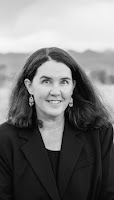
Cynthia Kuhn
Cynthia Kuhn:
Kate, the protagonist of “There Comes a Time,” would wear black ballet flats. Simple and elegant. Plus, she’s ready to dance at a moment’s notice, which is a good thing.
Lisa Q. Mathews:
Joey Romano, Sinatra impersonator extraordinaire, is between gigs at the moment, so he immediately volunteered to be my plus-one. He’s already begun his preparations, which include intensive vocal exercises (in case he’s invited to sing) and . . . repairing his tux shoes. His usual guy on Court Street told him they were beyond repair, but Uncle Joey was undaunted. He Sharpie-d the scuff marks, applied Gorilla Glue to the soles and a little spit polish to the faux patent leather, then buffed them up with Vaseline. Bada bing.

Richie Narvaez
Richie Narvaez:
Since they got me here today, I’d invite both Cece and Casper Reyes, the twin private eyes of “The Minnesota Twins Meet Bigfoot,” and I know Casper would want to wear brown wing-tips, but Cece would convince him to wear Converse sneakers to match hers.
Art Taylor:
Ha! I’m gonna cheat here and build off my last answer a bit—not a character but the partial inspiration for one: Our son Dash is actually coming to his first Agatha Awards Banquet this year! He won’t be wearing a Sherlock Holmes outfit, I should stress, but he does take pride in his shoes, a nice pair of gray dress shoes that look awfully sharp with his suit. Stay tuned!
Joan Long:
I would invite my character Jackson Butterfield to the Agatha banquet. Jackson is a jovial, middle-aged Texan. He enjoys flowered shirts, smokes cigars, and wears his graying hair in a short ponytail. He also loves to laugh and would likely show up at the banquet wearing beachy sandals with black socks.
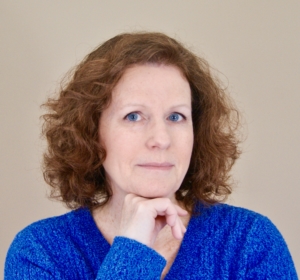
Korina Moss
Korina Moss:
I’d have to invite my main character, Willa. She’s a cheesemonger and is on her feet all day, so even for fancier occasions, she sticks to being comfortable. She would definitely wear her nicest pair of white triple platform Keds.
M.A. Monnin:
I’ll invite Thomas Burkhardt from Death in the Aegean. He’ll be looking sharp in a black suit with no tie, wearing black oxford cap toe shoes with rubber soles, which will be silent if he goes exploring where he isn’t supposed to be.

Harini Nagendra
Harini Nagendra:
Kaveri would wear Indian sandals–called juttis or mojaris. They are slip-on flat heeled slippers with a curled leather tip, lined with blue velvet, embroidered with her signature logo–a magnifying glass. The shoes perfectly complement the rest of her outfit – her peacock blue Kanjeevaram silk sari, and the custom-made jewelry set that her husband Ramu gave her when she concluded her first case – a gold chain with a magnifying glass pendant, and matching earrings.

Nina Wachsman
Rob Osler:
Burley, the gentle giant. She wears Orange Crocs. Size 13.
Nina Wachsman:
One of my main characters, Belladonna, is an elite courtesan in seventeenth century Venice, and as a sign of her status and power, she would wear the highest platform shoes, the tops made of satin and silk from the Far East.
BIOS:
Barb Goffman has been a finalist for major short-story crime awards 38 times and has won the Agatha, Macavity, Silver Falchion, and Ellery Queen’s Mystery Magazine Readers Award. She’s an editor of Black Cat Weekly and a freelance editor, often working on cozy and traditional mysteries. In addition to her current Agatha nomination, she’s a current finalist for the Thriller Award for her short story “The Gift” from the Bouchercon anthology Land of 10,000 Thrills. Look for her story “Real Courage” in Black Cat Mystery Magazine later this year. www.barbgoffman.com.
Cynthia Kuhn writes the Lila Maclean Academic Mysteries and Starlit Bookshop Mysteries. Her work has also appeared in Mystery Most Diabolical, Mystery Most Edible, McSweeney’s Quarterly Concern, Copper Nickel, Prick of the Spindle, Mama PhD, and other publications. She lives in Colorado with her family, where she is professor of English at Metropolitan State University of Denver. cynthiakuhn.net.
Joan Long:
Joan Long is a third-generation Floridian who writes mysteries and suspense. Her debut novel, The Finalist, is an Agatha Award nominee for Best First Mystery. Joan earned a bachelor’s degree in English/Creative Writing from Florida State University and a master’s degree in Journalism and Communications from the University of Florida. Her short story “The Extra Ingredient” is in the Anthony Award-winning anthology Malice Domestic 14: Mystery Most Edible. https://joanlongbooks.com
Lisa Q. Mathews
Lisa Q. Mathews used to make Nancy Drew’s life miserable. Then she set her beady sights on Lizzie McGuire and Mary-Kate and Ashley—all part of early jobs as a kids’ book editor and writer-for-hire. Now Lisa is the author of an odd-couple sleuth series for adults, The Ladies Smythe & Westin, and runs an independent editing service. A co-founding member of the Chicks on the Case blog, Lisa lives in New England. https://www.lisaqmathews.com/
M.A. Monnin’s debut mystery Death in the Aegean has been nominated for an Agatha Best First Novel Award. Her second in the Intrepid Traveler series, Death on the Grand Canal, launches May 18th. Mary also writes short crime fiction, with her latest short story in the SinC Guppy anthology Hook, Line & Sinker. Find her on Facebook, Twitter and Instagram. www.mamonnin.com.
Korina Moss is the author of the Cheese Shop Mystery series (St. Martin’s Press) set in the Sonoma Valley, including the Agatha Award nominated first book, Cheddar Off Dead. Her books have been featured in PARADE Magazine, Women’s World, AARP, and Fresh Fiction. Her latest book, Curds of Prey, released on 3/28. https://korinamossauthor.com.
Harini Nagendra is a professor of ecology at Azim Premji University and a well-known public speaker and writer on issues of nature and sustainability. The Bangalore Detectives Club is her first crime fiction novel. The sequel, Murder Under a Red Moon, will be published in 2023. https://harininagendra.com/
Richie Narvaez is the award-winning author of Roachkiller and Other Stories, Hipster Death Rattle, Holly Hernandez and the Death of Disco, and Noiryorican. https://www.richienarvaez.com/
Rob Osler’s debut novel Devil’s Chew Toy was a Lefty Nominee for Best Debut Mystery and Agatha Award Nominee for Best First Novel and named a 2022 Year’s Best by Crime Reads, BOLO Books, PopSugar, and Book Riot. His first publication, “Analogue,” (Ellery Queen Mystery Magazine), won the 2022 Mystery Writers of America Robert L Fish Award for best short story by a debut author. Forthcoming projects include “Miss Direction” (EQMM), Cirque du Slay (sequel to Devil’s Chew Toy), and a new historical series featuring an LGBTQ+ detective. Rob’s a member of MWA and Sisters in Crime. On good days, he writes, plays tennis, and eats pie in California, where he lives with his partner and Andy Action Cat. https://robosler.com
Art Taylor is the author of two collections—The Adventure of the Castle Thief and Other Expeditions and Indiscretions and The Boy Detective & The Summer of ’74 and Other Tales of Suspense—and On the Road with Del & Louise: A Novel in Stories, winner of the Agatha Award for Best First Novel. His short fiction has won three additional Agatha Awards as well as the Edgar, Anthony, Derringer, and Macavity Awards. He is an associate professor of English at George Mason University. www.arttaylorwriter.com.
Nina Wachsman majored in book illustration at the Parsons School of Design and studied under Maurice Sendak. She is currently the CEO of a digital marketing agency in New York City. She attends the Venice Art Biennale every two years and is a descendant of a chief rabbi of the Ghetto, a contemporary of her characters. She is a member of Sisters in Crime, Mystery Writers of America, and the Historical Novel Society, and has published stories in mystery and horror magazines and anthologies. The Gallery of Beauties is her debut novel, and its sequel, part of the Venice Beauties series. The Courtesan’s Secret will be released in Summer, 2023 by Level Best Books. https://ninawachsman.com






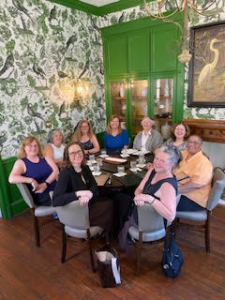
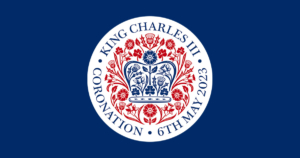
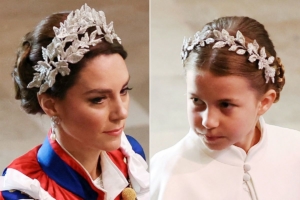











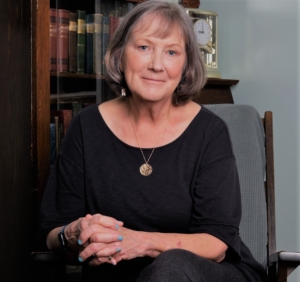
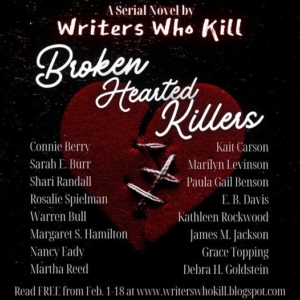 From February 1 until February 18 of this year, the Writers Who Kill blogging partners collaborated on a serial novella titled Broken Hearted Killers. I have to thank Martha Reed and Rosalie Spielman for initiating and organizing this project. When we all gathered for a photo at the 2022 Malice Domestic conference, they suggested the idea and those of us attending agreed we would like to try it. After going through the process, made very manageable by Martha and Rosalie’s diligence, I have to commend it as a great way to improve understanding character development and story structure.
From February 1 until February 18 of this year, the Writers Who Kill blogging partners collaborated on a serial novella titled Broken Hearted Killers. I have to thank Martha Reed and Rosalie Spielman for initiating and organizing this project. When we all gathered for a photo at the 2022 Malice Domestic conference, they suggested the idea and those of us attending agreed we would like to try it. After going through the process, made very manageable by Martha and Rosalie’s diligence, I have to commend it as a great way to improve understanding character development and story structure.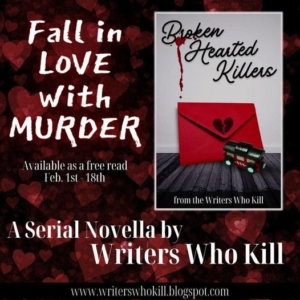 With Martha’s help, we kept a list of characters and significant events with notations about when they happened. We also tried to point out inconsistencies and correct them as we progressed so they didn’t become major obstacles to revise.
With Martha’s help, we kept a list of characters and significant events with notations about when they happened. We also tried to point out inconsistencies and correct them as we progressed so they didn’t become major obstacles to revise.